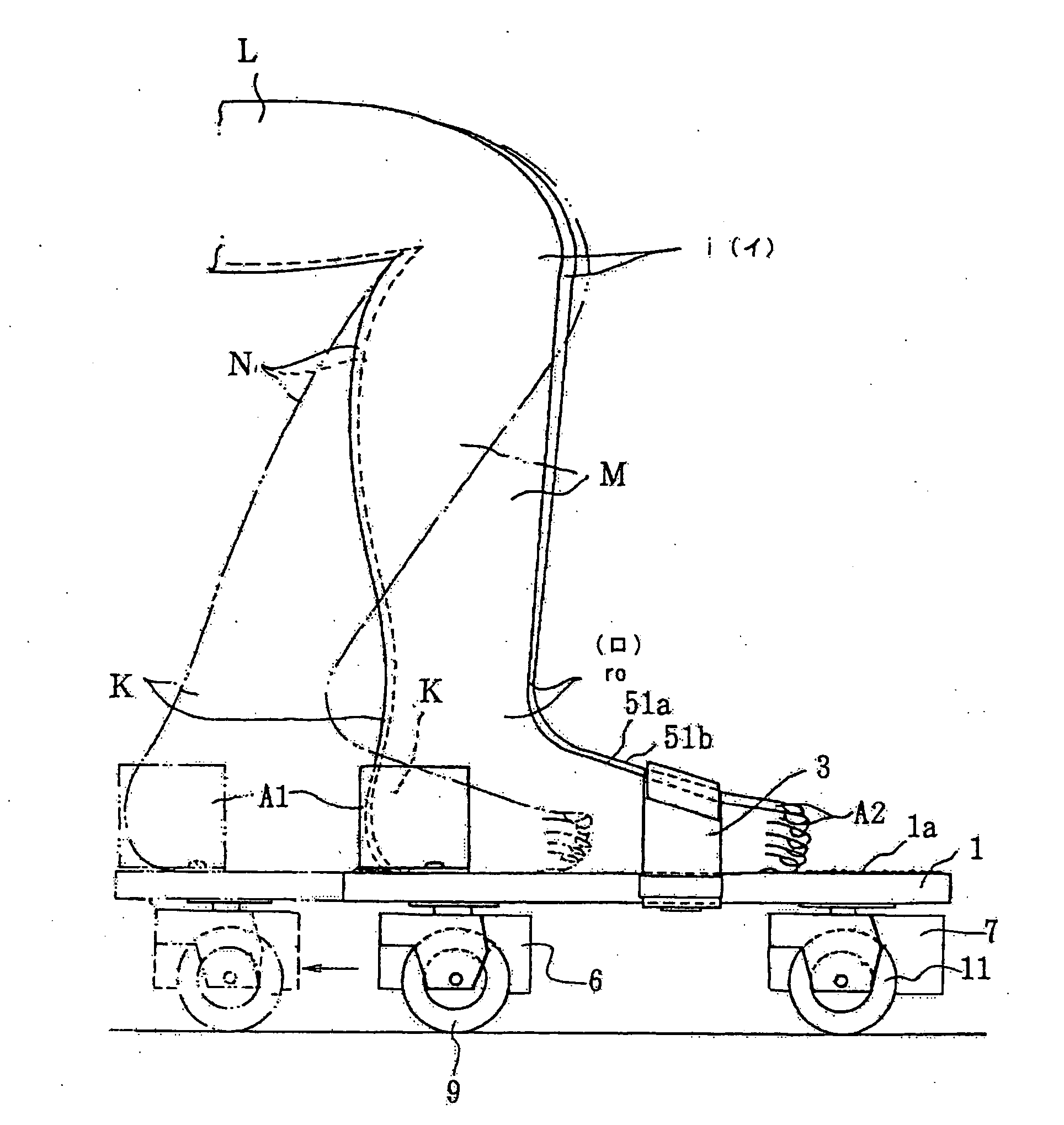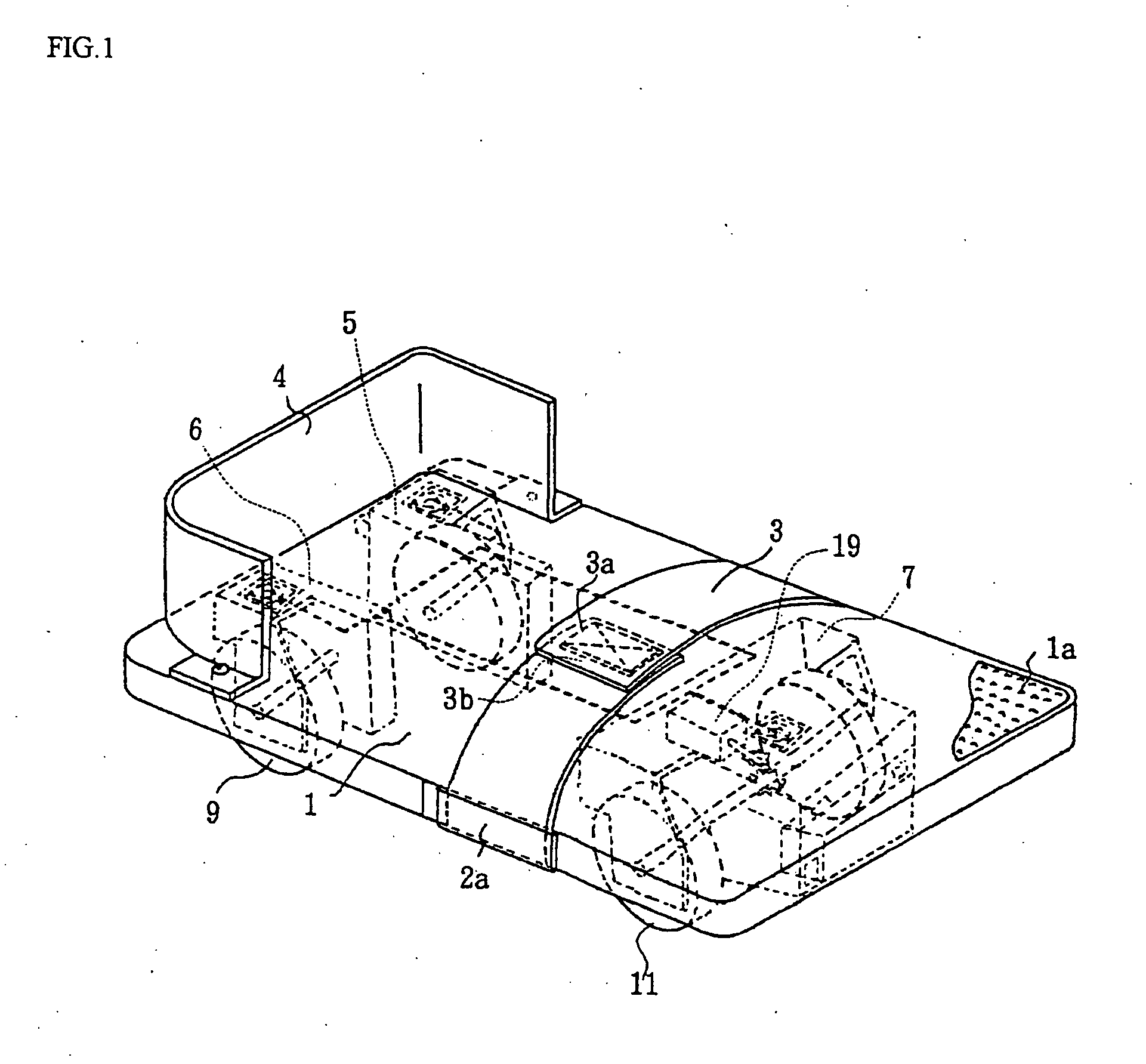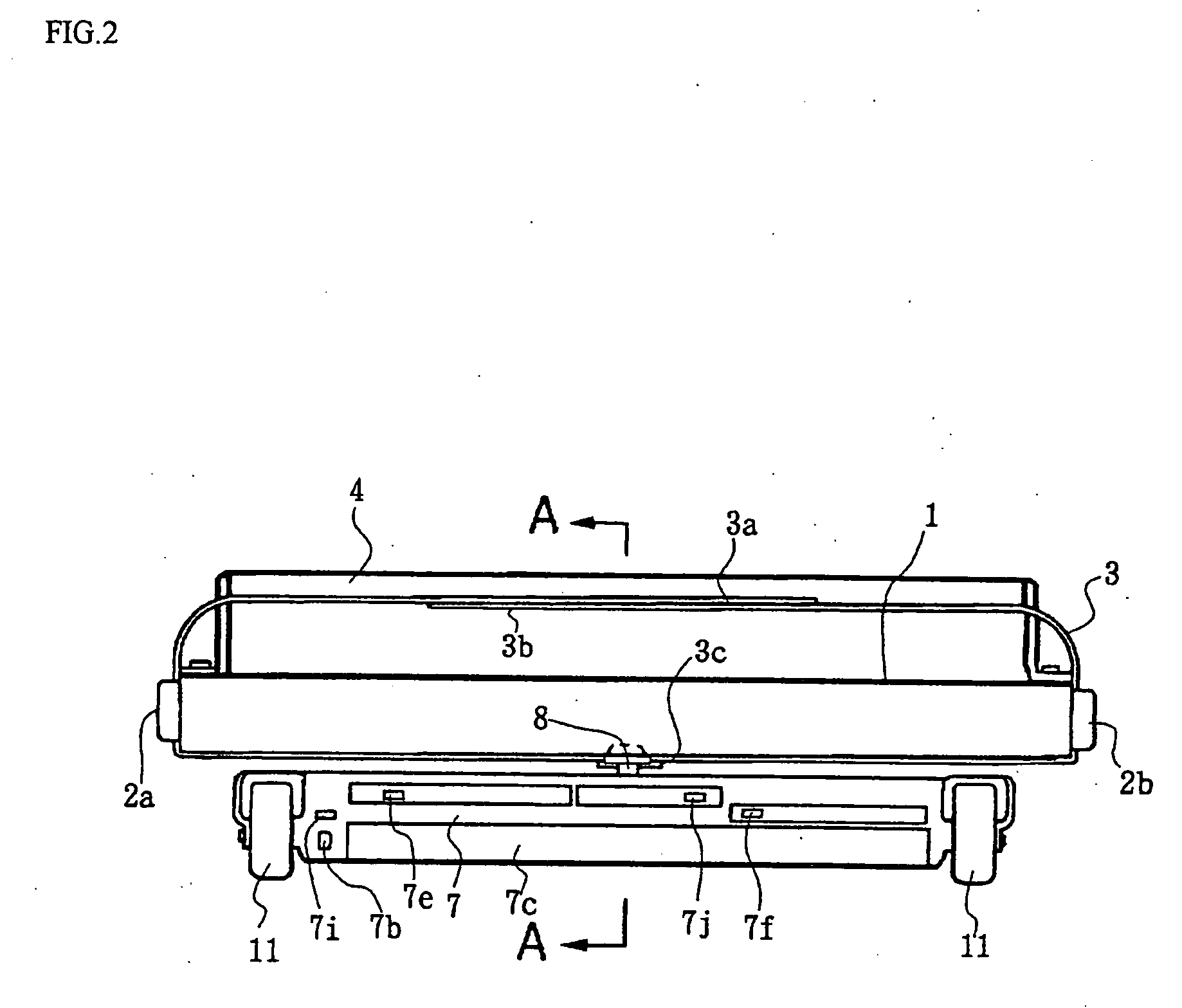Lower limb function training device
a training device and lower limb technology, applied in the direction of cardiovascular exercise devices, gymnastic exercise, sport apparatus, etc., can solve the problems of many times suited exercise not achieving the expected improvement, difficulty in performing passive exercise at one's convenience, and inability to achieve the expected improvemen
- Summary
- Abstract
- Description
- Claims
- Application Information
AI Technical Summary
Benefits of technology
Problems solved by technology
Method used
Image
Examples
first embodiment
[0106] I explain a lower limb function training device in this invention by using FIG. 1 and FIG. 8.
[0107] FIG. 1 is a perspective view of a lower limb function training device of the first embodiment.
[0108] FIG. 2 is a front view of FIG. 1.
[0109] FIG. 3 is a rear view of FIG. 1.
[0110] FIG. 4 is a A-A cross section view of FIG. 2.
[0111] FIG. 5 is a side view while using, which sets and fixes the two legs.
[0112] FIG. 6 is a side view showing the state of performing Plantar Flexion exercise.
[0113] FIG. 7 is a control circuit diagram.
[0114] FIG. 8 is a flowchart in case, which the connection between a wheel and a motor are cut.
[0115] Furthermore, the drawing of a rear wheel support of a right and left part is omitted in FIG. 2.
[0116] Also, the drawing of the front wheel support parts is omitted in FIG. 3.
[0117] A foot rest (1) is formed with wood in midair with a plane abbreviation rectangular (when necessary another material can be used in place of wood, such as plastic).
[0118] The fo...
second embodiment
[0182] Next, I explain the second embodiment by using FIG. 9 to FIG. 13.
[0183] FIG. 9 is a perspective view of a foot rest of the second embodiment.
[0184] FIG. 10 is a perspective view of a foot rest move stand of the second embodiment.
[0185] FIG. 11 is a perspective view of the second embodiment.
[0186] FIG. 12 is a side view of the second embodiment.
[0187] FIG. 13 is a perspective view of the second embodiment in a usage state.
[0188] Furthermore, I omit the detailed explanation of composition elements parity to the first embodiment by putting the same mark in the explanation of the second embodiment.
[0189] The second embodiment consists of a foot rest (1) and a foot rest cart (22) as a measuring instrument, and the similar functions to the first embodiment are realized by combining a foot rest (1) and a foot rest cart (22).
[0190] Same as the first embodiment, both a heel support part (4) and setting band (3) assemble a foot rest (1) of this embodiment.
[0191] Several wheels (21) tha...
third embodiment
[0229] Next, I explain the third embodiment by using FIG. 14 and FIG. 17.
[0230] FIG. 14 is a side view of a lower limb function training device of the third embodiment.
[0231] FIG. 15 is a perspective view of FIG. 14.
[0232] FIG. 16 is a side view while in use, which sets and fixes the two legs.
[0233] FIG. 17 is a side view of the modification of the third embodiment,
[0234] (a) is a view of the first modification,
[0235] (b) is a view of the 2nd modification.
[0236] A foot rest (301) is formed of plastic (or can necessarily be made of wood, etc.) and a space inside with a plane similar to a rectangle.
[0237] The foot rest (301) has an area of sufficient width that can set both feet shown as FIG. 16 (for example, the size of the side about 20 cm and about 25 cm, length).
[0238] Therefore, a disabled person can set both a foot with a disability, which has hemiparesis of lower extremities of a nerve, decline of the lower extremities muscular strength that originates from a plasmotomy of Achi...
PUM
 Login to View More
Login to View More Abstract
Description
Claims
Application Information
 Login to View More
Login to View More - R&D
- Intellectual Property
- Life Sciences
- Materials
- Tech Scout
- Unparalleled Data Quality
- Higher Quality Content
- 60% Fewer Hallucinations
Browse by: Latest US Patents, China's latest patents, Technical Efficacy Thesaurus, Application Domain, Technology Topic, Popular Technical Reports.
© 2025 PatSnap. All rights reserved.Legal|Privacy policy|Modern Slavery Act Transparency Statement|Sitemap|About US| Contact US: help@patsnap.com



